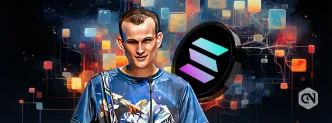DTCC or The Depository Trust & Clearing Corporation in collaboration with the software technology giant, Accenture, has published a whitepaper, Governing DLT Networks concerning the digital space.
The whitepaper opines to introduce a governance operating framework centered around the Distributed Ledger Technology (DLT) with a view to managing risks and issues of the blockchain sphere. The model ensures to facilitate the safety and efficiency of the network that will bring ease-of-work for all the users along with a potential possibility to flourish DLT in the best way possible.
Having proven its mettle to innovate and improve corporate as well as enterprise operations, DLT has become quite popular in the financial arena.
The whitepaper mentions the responsibilities and vital operations involved in the working and maintenance of the DLT platform. It also gives place to a governing function which will foster in decision-making concerning activity, software changes, connectivity, contracts, and transaction completeness for all the users operating on the network.
Advertisement
Robert Palatnick, Chief Technology Architect, DTCC, said in an interaction:
The financial services industry has seen unprecedented growth in data and processing power over the last 50 years.
The genius further added,
Distributed ledger technology, with its built-in consistency, security, and privacy, holds great promise to transform the digital landscape, but DLT’s full potential will only be realised with the implementation of a strong and transparent governing model.
The eight functional areas highlighted in the DLT Governance Model of the whitepaper include:
- Governance: It aims best measures of risk control and strategic decision-making functions for the DLT network with four responsibility areas: Steering Committee, Functional Working Group, Technical Working Group, Change Committee.
- Participant Lifecycle: The lifecycle of a participant, including the management and operations of the new member onboarding the network is to be maintained.
- Runtime operations: Lists the routine execution of DLT working including the major functions on DLT runbook such as monitoring, reporting, support, change, and release management.
- Data Governance: It lists concepts concerning participant entitlement, confidentiality, and reference data controls.
- Third-Party Management: Gives a brief about the functions of the service providers and the vendors operating in the network.
- Platform Management: It deals with the DLT ecosystem version rather than the traditional “application development” model, framed to support the various layers of DLT.
- Infrastructure: It highlights the core network management functions
- Legal and Finance: It includes domains of vendor and licensing risk, patent risk, open-source risk, and risk involved in crossing global borders.
The notable Managing Director of Accenture Capital Markets, Wynn Davies said:
The power of DLT can deliver significant operational efficiencies to the industry which will only be fully realised if we ensure that we all know how to play and reap the benefits together.
Advertisement
He further added:
Working in collaboration with DTCC, Accenture has developed a governance model to manage the risks and consequences of a distributed ledger landscape, and we believe this governance paper is the beginning of a critical dialogue that needs to continue. Research, experimentation, and learning about the challenges and potential for DLT-based governance processes will be essential as these platforms become more widely adopted.







